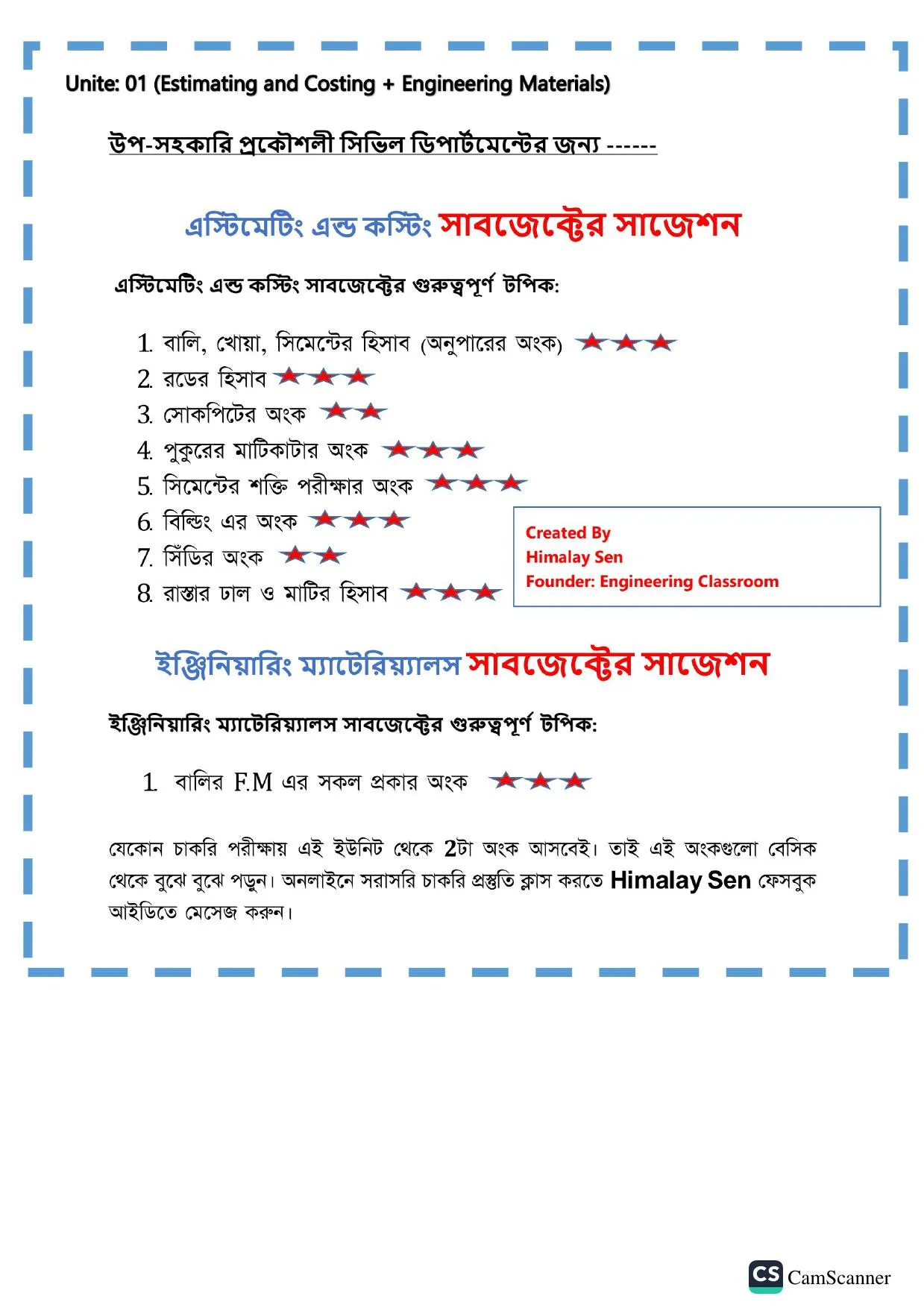MCQ
321. হেভি ফোর্স ফিট কোথায় ব্যবহৃত হয়?
স্থায়ী সংযোজনী
পুলি
ভারী যন্ত্রপাতিতে
কোনোটিই নয়
322. বিভেল প্রটেক্টর-এর সর্বনিম্ন মাপ কত?
2min
6min
5min
1min
323. ফিটের কোন পদ্ধতিতে সহজে পার্ট মিলানো যায়?
পুশ ফিট
ড্রাইভিং ফিট
ফোর্স ফিট
রানিং ফিট
324. লিড পেনসিল লিড লাগানো কোন ধরনের ফিট?
রানিং
পুল
পুশ
ড্রাইভিং
325. ফিটের কোন পদ্ধতিতে আঘাত দিয়ে পরস্পর পার্টস লাগাতে হয়?
ফোর্স ফিট
পুশ ফিট
ড্রাইভিং ফিট
রানিং ফিট
326. গো প্রান্ত নট গো অপেক্ষা--হয়।
ছোট
লম্বা
সমান
কোনোটিই নয়
327. কলমে ক্যাপ লাগানো কোন ধরনের ফিট?
রানিং
পুশ
পুল
ড্রাইভিং
328. বিভেল প্রোট্রেক্টর-এর লিস্ট কাউন্ট কত?
1min
5min
3man
2min
329. টলারেন্স কত প্রকার?
২ প্রকার
৪ প্রকার
৩ প্রকার
৫ প্রকার
Himalay Sen Sir
মেকানিক্যাল ইঞ্জিনিয়ারিং MCQ
mechanical mcq
মেকানিক্যাল বিগত সালের প্রশ্ন সমাধান
metrology mcq
ব্যাখ্যা: টলারেন্স দুই প্রকার। যথা- ১। একমুখী টলারেন্স ও ২। দ্বিমুখী টলারেন্স।
330. শ্যাফট-এর সর্বোচ্চ মাপ ও ছিদ্রের সর্বনিম্ন মাপের পার্থক্যকে কী বলে?
সর্বনিম্ন ইন্টারফিয়ারেন্স
শ্যাফটের টলারেন্স
সর্বোচ্চ ইন্টারফিয়ারেন্স
ছিদ্রের টলারেন্স
331. ডাইমেকার স্কয়ার-এর কাজ কী?
ডাই -এর ক্লিয়ারেন্স মাপা
ডাই -এর অ্যালাউন্স মাপা
ডাই-এর দৈর্ঘ্য মাপা
ডাই -এর প্রস্থ মাপা
332. ফিটের কোন পদ্ধতিতে প্রচুর বল প্রয়োগে সংযোজন সম্পন্ন করা হয়?
ফোর্স ফিট
পুশ ফিট
রানিং ফিট
ড্রাইভিং ফিট
333. যখন কোনো মিলনযোগ্য শ্যাফটের সাইজ ছিদ্র অপেক্ষা বেশি হয় তখন এদের সংযোজন অবস্থাকে-- অ্যালাউন্স বলে।
পজিটিভ
নেগেটিভ
উভয়
কোনোটিই নয়
334. শ্যাফট এবং হোলের মাঝে ক্লিয়ারেন্স রাখার সময় যখন হোলের মাপ স্থির রেখে শ্যাফটে ক্লিয়ারেন্স রাখা হয়, তখন তাকে কী বলে?
বেসিক হোল সিস্টেম
বেসিক শ্যাফট সিস্টেম
ইন্টারচেঞ্জবিলিটি
সবকয়টি
335. দুটি মিলনযোগ্য যন্ত্রাংশের মধ্যে সর্বাধিক অনুমোদিত অ্যালাউন্সকে কী বলে?
ক্লিয়ারেন্স
টলারেন্স
অ্যালাউন্স
কোনোটিই নয়
336. টলারেন্সের ব্যাপ্তি যদি পজিটিভ অথবা নেগেটিভ উভয় দিকে বিস্তৃত থাকে, তবে তাকে টলারেন্স বলে।
বাইল্যাটারাল
ক্লিয়ারেন্স
ইউনিল্যাটারাল
ফিট
337. শ্যাফট-এর সর্বনিম্ন মাপ ও ছিদ্রের সর্বোচ্চ মাপের পার্থক্যকে কী বলে?
সর্বনিম্ন ইন্টারফিয়ারেন্স
সর্বোচ্চ ইন্টারফিয়ারেন্স
শ্যাফটের টলারেন্স
ছিদ্রের টলারেন্স
338. ফিটের কোন পদ্ধতিতে আঘাত না দিয়ে কেবল গ্রা প্রয়োগের মাধ্যমে সংযোগ করা হয়?
রানিং ফিট
পুশ ফিট
ফোর্স ফিট
ড্রাইভিং ফিট
339. গিয়ারের হোলে বুশ লাগানো কী ফিট?
রানিং
পুল
পুশ
ড্রাইভিং
340. সূক্ষ্ম যন্ত্রপাতি নয় কোনটি?
ভার্নিয়ার হাইট গেজ
ভায়াল গেজ ইন্ডিকেটর
সানইবার
ট্রাইস্কয়ার
















